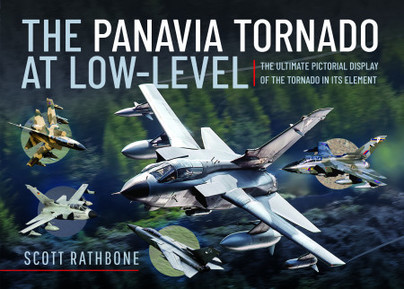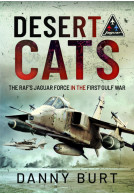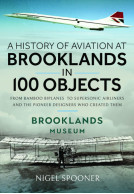The Panavia Tornado at Low-Level (Hardback)
The Ultimate Pictorial Display of the Tornado in its Element
Imprint: Air World
Pages: 320
Illustrations: 250 colour illustrations
ISBN: 9781399033046
Published: 4th October 2024
(click here for international delivery rates)
Order within the next 47 minutes to get your order processed the next working day!
Need a currency converter? Check XE.com for live rates
| Other formats available | Price |
|---|---|
| The Panavia Tornado at Low-Level ePub (478.7 MB) Add to Basket | £6.99 |
The small group of enthusiasts and photographers who had braved the winter weather and gathered on the slopes of the Lake District’s iconic valleys on Wednesday, 9 January 2019, were witnesses to the end of an era. The RAF Tornado GR.4 that raced past them, in some cases at a lower altitude than the onlookers, made the last ever low-level flight by this aircraft in the United Kingdom Low Flying System. Never again would the ‘Mighty Fin’, an aircraft that had been a familiar sight among the valleys of the UK for around forty years, provide such a spectacle.
First flown in August 1974, the Tornado arguably become of the RAF’s most important aircraft of the Cold War. Indeed, the Tornado was the mainstay of RAF strike aircraft, from its early days as a nuclear capable low-level interdiction strike fighter (the GR.1 in RAF service), through to its retirement as a more versatile medium to high-level strike fighter, the GR.4.
Along with the shorter-lived Air Defence Variant, the F.2/F.3, the Tornado was without doubt one of the best loved aircraft types amongst photographers and crews with the sheer number of the initial GR.1s allowing them to populate eleven front-line squadrons as well as the training units of the Tri-National Tornado Training Establishment and the Tornado Weapons Unit. Altogether, over twenty units flew variants of the type in the RAF alone.
The Tri-National Tornado Training Establishment also catered for the other partner nations of Germany and Italy with all crews finding their way into the United Kingdom Low Flying System on a regular basis. It was, in fact, the impending introduction of the Tornado and the resulting increase in low-level activity that forced a restructuring of the UKLFS in 1979.
In this book, Scott Rathbone provides a pictorial record of the Tornado in its element, that of low-level. With images dating back to the 1980s, almost all variants are accounted for, as are the majority of RAF squadrons and units from other nations’ air arms. Colour is in abundance, with various camouflage patterns and special schemes as seen and photographed in the UKLFS and elsewhere, including the United States of America, over four decades. This, then, is a unique tribute to a remarkable aircraft.
We see a clear picture of the many squadrons that operated the Tornado for the RAF, as well as Italian, German and Saudi aircraft. There are tables of all the GR4s built, including their serials, code, operator and remarks which does include those lost to accidents etc.. While aircraft enthusiasts will lover this, I think modellers will be real fans, as there are so many camouflage schemes, markings options, and weathering detail that there is so much inspiration in here to inspire a new Tornado build. Many of the special marking schemes will be especially attractive, and while I am hesitant to pick out just one, I think the red spined F3 of 56(R) squadron on page 169, a picture taken in 2007 is rather impressive. At the back of the book, a great list of the individual call signs of the many Tornados visiting the low fly zones.
Military Model Scene
Read the full review here
About Scott Rathbone
SCOTT RATHBONE was born in Altrincham, South Manchester in 1971. A train driver with a 36-year railway career, he is one of two drivers involved in setting a speed record for a train journey between Glasgow and Manchester. A keen fan of sports, particularly football, cricket, tennis and motor-sport, he became fascinated by aircraft during 1982 with the media coverage of the Falklands conflict and family visits to Manchester Airport. Having had an interest in photography since the late 1980s, he expanded that through the 1990s with his low-level photography exploits starting in 2001, the same year that he had his first image published in a major magazine. Now living in Poynton, Cheshire, Scott has embarked on producing his first book, looking back on his own memories of time spent in the valleys of the UK, with help from friends and other like-minded enthusiasts.
The United Kingdom has some of the most dramatic landscapes that can be used by pilots to train in the vital skill of low flying. Aircrew preparing for operations in Afghanistan, Iraq and other potential war zones frequently hone their skills flying through the valleys of the UK, sometimes at near subsonic speed. In Cumbria, as well as other major training areas within the United Kingdom Low Flying System, such as parts of Scotland and the world-famous Mach Loop in Wales, pilots can be seen on an almost daily basis sharpening their skills as they weave their aircraft, from basic trainers to the…
By Scott RathboneClick here to buy both titles for £61.25
















